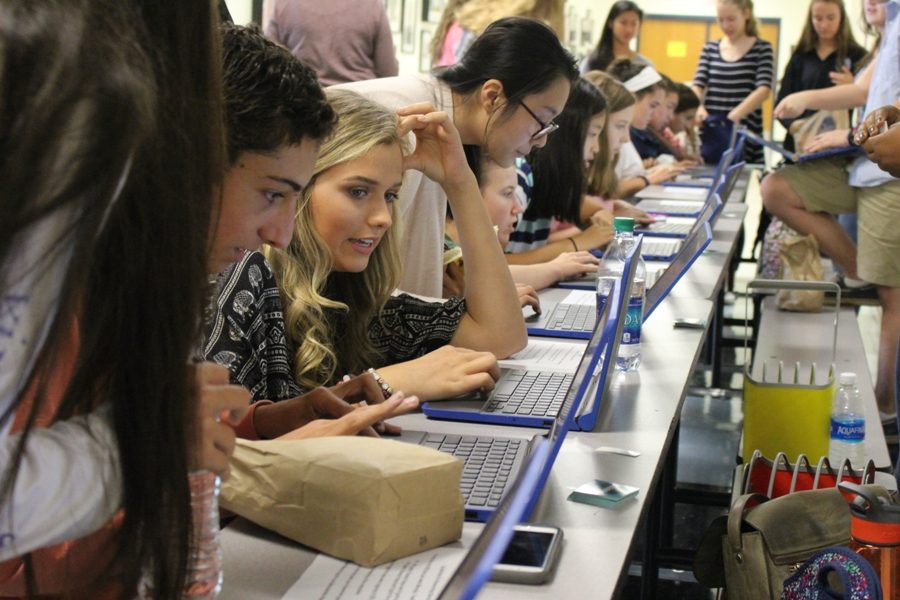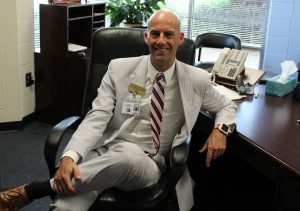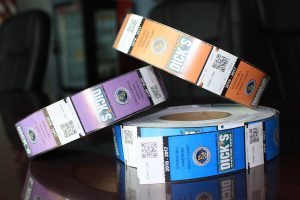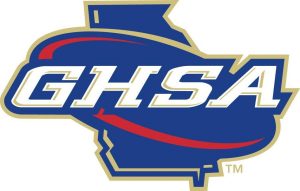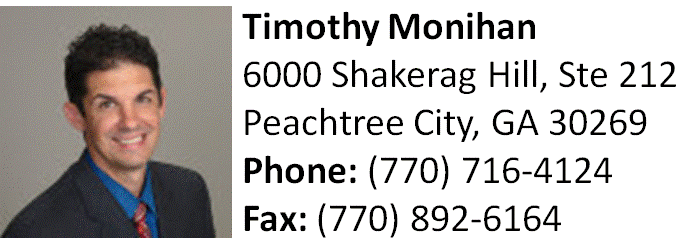Ground up reconstruct, Student Government Association
Just outside of the lunchroom, during all three lunches, Student Government Association provides Chromebooks for students to make their homecoming court nominations. The final court nominees were announced on Sep. 9 but court winners will be announced on Friday, Sep. 23 at the homecoming game against Morrow at home.
September 19, 2016
As students kneel down to scroll through the homecoming court ballot and put in their votes, they have the satisfaction that someone who has previously been on homecoming court can be on it again. This change, and several others, can be traced back to the Mill’s Student Government Association revamp, where English teachers Ashley Collins and Whitney Shoemaker met over the summer to reconstruct the club.
“It’s hard to put a number on the time we’ve spent discussing, researching, and meeting about the re-vamp. The officers, Mrs. Collins, and I met at least three times over the summer to edit and create documents based on the National Association of Student Council [NASC].”
In order for the reconstruction to have legitimacy, Shoemaker had to abide by the NASC guidelines, an association that has, according to the website, “more than 9,000 member schools nationwide” and provides “student councils and their advisers the tools and resources they need.”
Shoemaker used the NASC tools and resources to reach her main goal of “[ensuring] that we have guidelines and accessibility for all students.”
When she took over SGA five years ago, Shoemaker didn’t have many guidelines to go off of but “after doing research into other Student Governments and the NASC website, I was able to access [information] to make SGA work efficiently,” Shoemaker said, and, by “using the guidelines from NASC, the officers and I were able to set specific guidelines to define membership, hold elections, and run meetings.”
Shoemaker expects the entire 2016-2017 school year to be a transition period but progress has already been made in the officer election process, which is regarded as one of the biggest changes. “In the past, a candidate’s position was based 50% on an interview and 50% on general election. A glitch in this process is that students who had zero experience with SGA or executive board were able to run for class officer positions,” Shoemaker said.
This year, “officers must qualify prior to campaigning.” This means that each officer must have at least a 3.0 grade point average, an 80% attendance rate at previous SGA or Class Executive Board meetings, and finally, complete an interview process with sponsors. “Once a student [becomes] eligible to run, [they are] notified so [that they] can campaign,” Shoemaker said.
Senior Class President Caroline Dillon thinks that one of the most notable changes “is the homecoming court repeat rule. Court used to be set up where if you were on the court any of your underclassmen years, then you couldn’t be on it again until senior year. Now, anyone can be on it as many times as [they like].”

In preparation for homecoming week, members of the class of 2018 Executive Board and their parents, work diligently to finish the 700 hallway in superman paraphernalia. The homecoming pep rally will be held Friday at 2:55 p.m. in the gym.
Junior Clarence White supports the homecoming change because he feels that “since homecoming is about people’s choice, then it should be whoever gets picked.”
After hearing the feedback from students about the homecoming alteration, Dillon concluded that “SGA is all about trying new things.”
One thing that has not been altered is Shoemaker’s position as SGA sponsor.
Although Shoemaker took over SGA five years ago, she does not consider herself the head of the association and instead views herself as “merely a facilitator.” Most components of SGA rest on the shoulders of students and Dillon said that “[she] thinks the students do a lot of the work, after all, it is called ‘student’ government.”
Dillon also believes that Shoemaker tries to let students do a majority of the work load, and she does. “The Starr’s Mill High School Student Government is led by students and driven by its members,” Shoemaker said. However, Dillion doesn’t deny Shoemaker’s role in the association’s success, and admits that “a lot of things wouldn’t get done without [her] help,” Dillon said.
SGA typically meets on alternating Wednesday mornings at 8:00 a.m in room 717.


